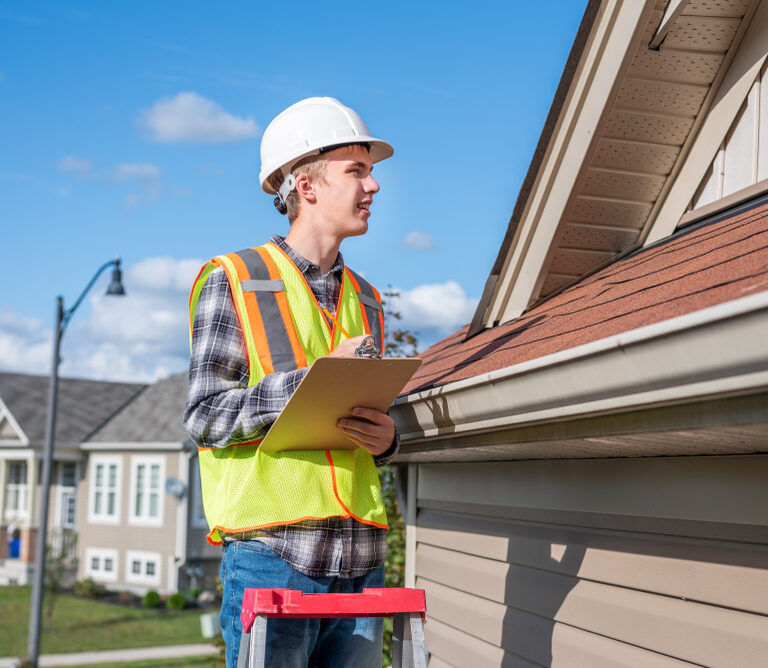Your roof is one of those things you might not ever think about until there’s a problem. If there’s no gaping holes and nothing’s on fire, it’s fine, right? Not quite. Roofs require regular maintenance and periodic replacements to prevent major, expensive disasters later on. But how long does a roof last? How often do you need to do maintenance? What kind of maintenance are we talking about here?
As with most things in life, the answer is, it depends. In this article, we’ll talk about 5 of the most common roof types. Find yours on the list and read about how long your roof will last, and what you should be doing to keep it in tip-top condition:
Approximate Lifespan and Maintenance Tips for the 5 Most Common Types of Roofs
Asphalt Shingles
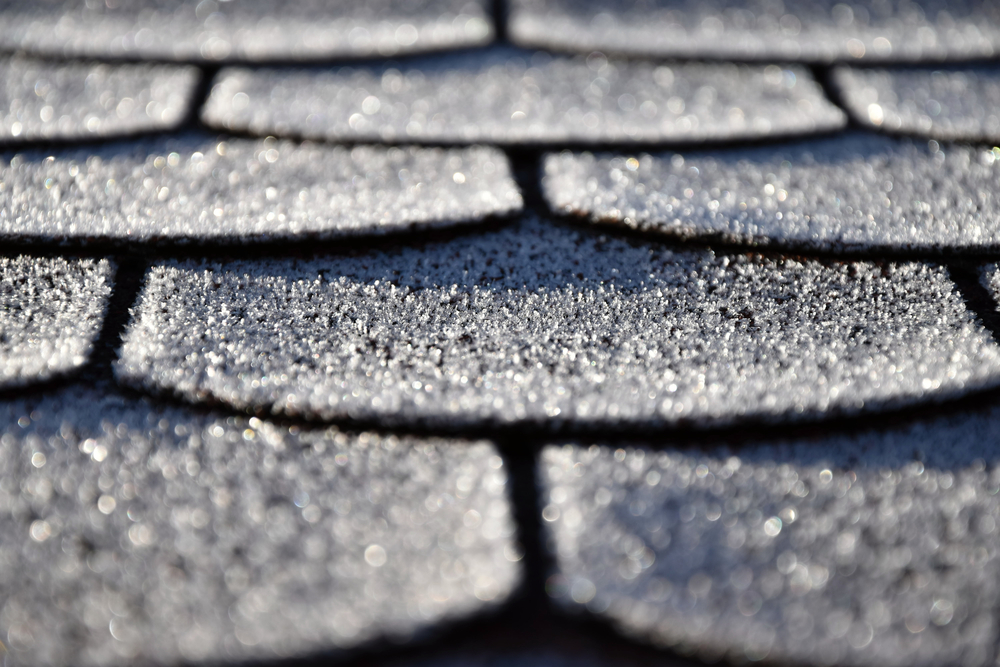
Asphalt shingles can last anywhere from 15 to 30 years. This is short compared to most other roofing types. Even though they have a relatively short lifespan, they’re still a popular choice because they’re much cheaper to install and repair than most other roof materials. The shingles are made from a blend of asphalt, fiberglass, and minerals.
What You Can Do to Help Your Roof
Here are some of the best things you can do to get the longest possible lifespan out of your asphalt roof:
- Inspect the roof annually for cracked, curling, or crumbling shingles. Replace these right away.
- Clear debris from your roof 3-4 times a year, and after any major storm.
- Keep rain gutters clear.
- Check for pooling water after it rains. Take a look at your roof right after the rain stops. If there’s significant pooling, the roof might not have been installed well, or there might be rot or other damage underneath those areas. Get a roof inspector out to take a look if you notice any pooling.
Wood Shakes and Shingles
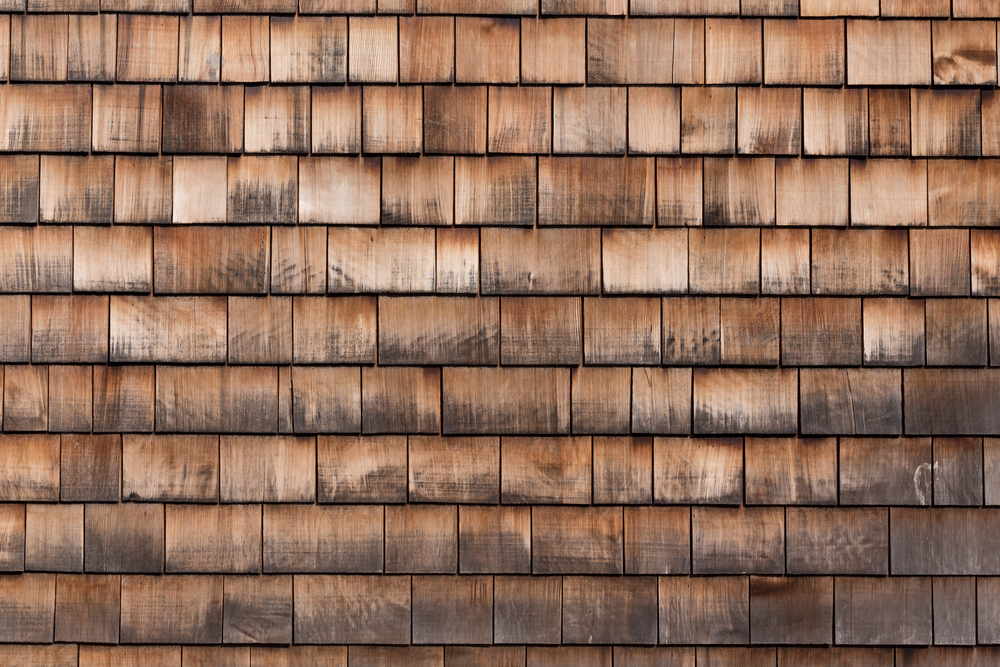
Wood shakes and shingles are a little more durable than asphalt, lasting around 30 years (provided you aren’t in a really humid climate). The biggest issues they face are rot and pest infestations. Termites, wasps, and other bugs love curling up inside a nice, cozy wood roof.
Different types of wood last longer than others, but cedar has become the standard due to its durability, so you’re unlikely to find wood shakes or shingles made from anything else.
What You Can Do to Help Your Roof
While wood doesn’t break down nearly as quickly as asphalt, it still needs a lot of TLC. Here are some basic care and maintenance tips for your wood shakes and shingles:
- Inspect your roof annually for signs of splitting, rotting, or moldy shingles. Replace these immediately.
- Also inspect for signs of pest infestation, fungal attacks, and other organisms that might want a taste of your roof. Use this helpful visual guide to identify different kinds of infestations and damage in your wood shake or shingle.
- Sweep away dirt and debris 3-4 times a year, so that decomposing leaves and branches don’t start decomposing your roof along with them.
- Keep rain gutters clear, so that drainage is not interrupted.
- Re-stain the wood with a water-repellant, UV-resistant stain every five years—more often if you live in a high heat or high humidity climate.
Clay Tile
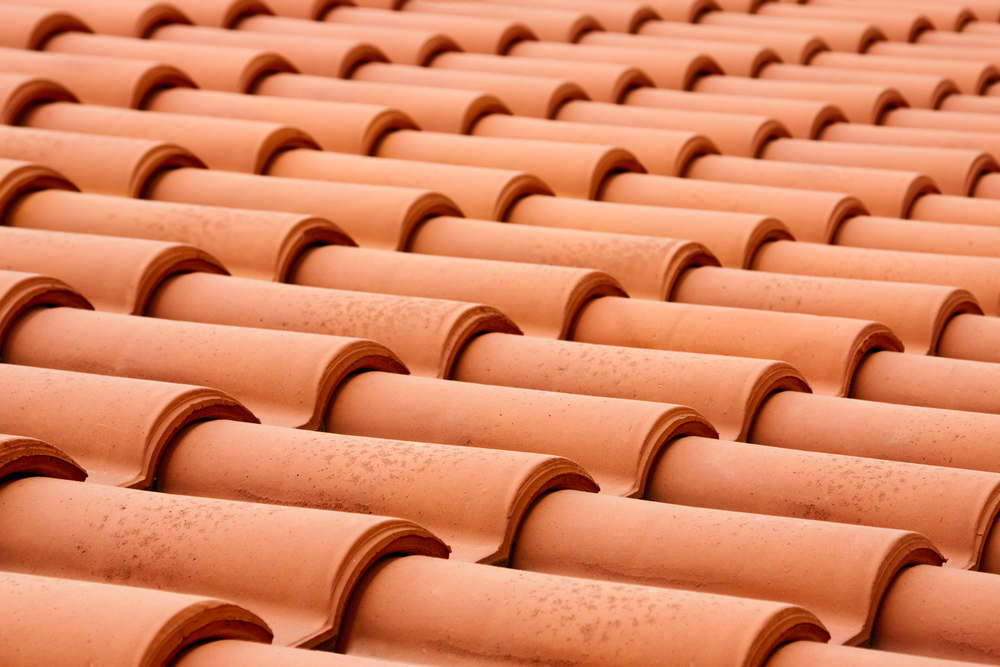
As you can guess from the name, the tiles are made of clay that’s been molded into interlocking shapes. Clay is a hardy, relatively low maintenance roof that can last between 50 and 100 years. Clay is naturally weather resistant and fire resistant, making it one of the best options for hot, wildfire-prone climates. It also doesn’t rot.
The biggest problems you’ll deal with are cracked tiles from rogue tree branches or algae and moss growth. These plants love growing on clay, but their roots can penetrate down into the layers of insulation beneath the tiles and cause leaks.
What You Can Do to Help Your Roof
Clay tile doesn’t need too much attention, but you can’t completely ignore it. Your main job is to keep algae and moss away while also periodically replacing broken tiles.
- Inspect the roof annually for cracked or chipped tiles. Replaced damaged tiles immediately.
- Consider relocating or cutting down any trees that are near your house. Clay cracks easily on impact, and trees can do real damage.
- If you live in a climate with freezing temperatures, apply a special cold weather sealant to the surface of the tiles to prevent cracking in the winter.
- Do a low-pressure wash with a detergent (like dish soap or laundry detergent) 2-3 times a year to get rid of algae and moss before it takes root.
Metal Roofing
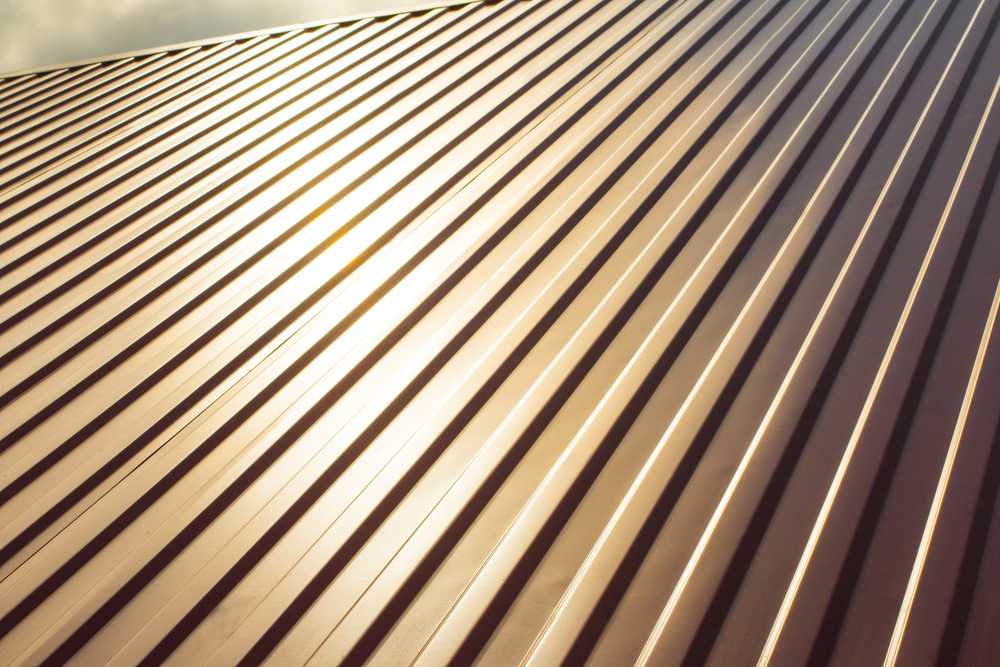
Metal roofing comes in two varieties: standing seam and shingles/shake. Standing seam metal roofs are made of long panels that lock together in raised seams. Metal shingles or shake look like a metal version of any other shingle or shake.
Metal roofs can last anywhere between 40 to 100 years when built well. Standing seam roofs tend to last better than metal panels or tiles. They’re a great option in any climate, but the price can vary significantly, based on the type of metal you choose.
What You Can Do to Help Your Roof
Metal roofs are fairly low maintenance, especially if you spring for zinc, which is dent and scratch resistant. You’ll really just need to do the one annual inspection. However, you’ll want to be more meticulous in that inspection than you might be with other roof types. Here’s what to look for:
- Inspect the roof annually for rust, water stains, discoloration, or mold. Replace damaged sections immediately.
- Also check for loose screws during this inspection. You can usually tighten those yourself.
- Inspect the sealant along the seams and edges, as well. Reseal any areas where the sealant has cracked or degraded.
- Regularly trim branches from trees near your home, so that they don’t dent or scratch your roof.
Slate
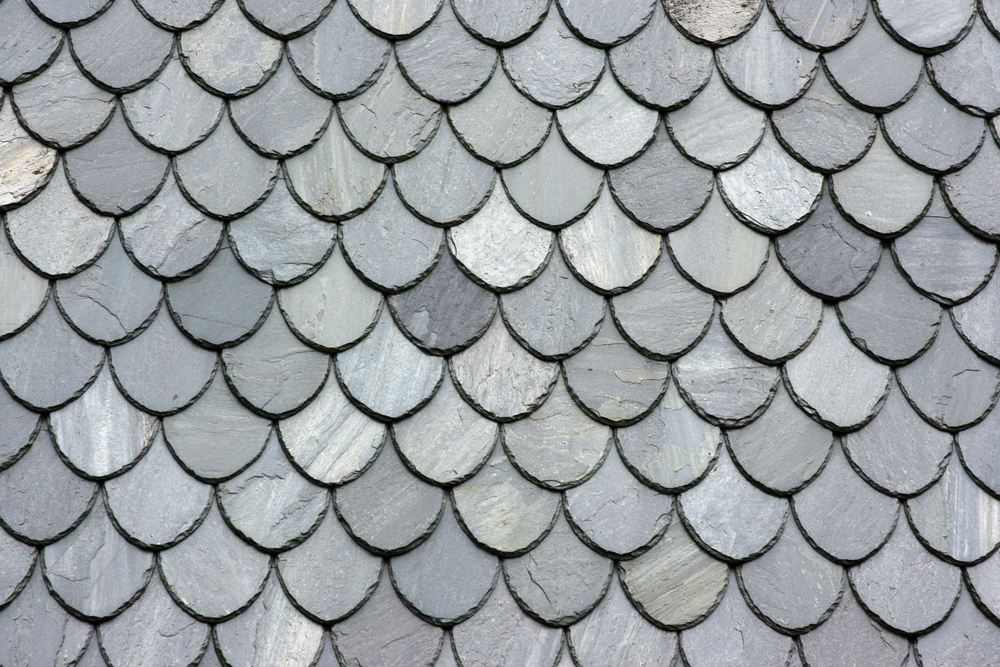
Slate wins the race by a landslide, with a lifespan of 75 to 200 years. It’s natural stone so it doesn’t really take damage from the elements like other manufactured materials do. It doesn’t rust or rot or corrode.
Given its durability, low maintenance requirements, and longevity, it’s not surprising that slate is one of the more expensive options. But it can literally last for centuries, so it’s a worthwhile investment for those who are ready to make it.
What You Can Do to Help Your Roof
Even though slate can weather any season or climate, it’s surprisingly delicate when you’re handling it. It doesn’t require as much upkeep as other roofs, but you do have to be careful if you’re doing anything on or near it. Here are some tips:
- Keep branches and trees away from your roof. Like clay or metal, slate can suffer real damage from the impact of branches.
- Do your annual inspection from the ground. Avoid walking on the roof as much as possible, as stepping on slate can crack it. Check for cracked or chipped slate from the ground, instead.
- Use a brush or gentle stream of water to clear off debris. Don’t use a pressure washer.
3 Things That Have the Biggest Impact on Your Roof’s Lifespan
The three things we’ll talk about in this section can shorten or extend your roof’s lifespan, regardless of what material it’s made out of. If you already have a roof bought and paid for, there’s nothing much you can do about these. But if you’re in a position where you’re building a new home or doing a complete replacement of your roof, factoring these three things into your decision will make a real difference on how many years you get out of your new roof.
Your Climate
Different types of roofing materials will fare better in different climates. Choosing something that’s suited to the climate you live in will make a huge difference. While you’ll want to do your own research and get recommendations from local roofers, here’s a very rough breakdown of which types of roofing do best in which climates:
- Hot and Dry Climates: Clay, metal, slate
- Hot and Humid Climates: Clay, metal, slate
- Cold and Dry Climates: Wood shingles, slate
- Cold and Humid Climates: Metal, slate
- Mild Climates (i.e.- stays between about 40° to 80° Fahrenheit and 30% to 50% humidity all year round): Asphalt, wood shingles, or pretty much any roof you want will do well here.
Picking a Metal Roof for Your Climate
While metal roofs can work in all climates, the specific type of metal you choose should be based on your climate. You’ll usually see four different metals to choose from. Here are some tips for choosing the right one for your roof:
- Aluminum: It’s rust resistant, but expands and contracts with temperature changes easily. Choose it for humid climates that don’t have dramatic temperature fluctuations throughout the year.
- Zinc: Zinc is naturally dent-resistant and can handle temperature fluctuations well, but it can corrode without proper insulation. Choose it for any dry climate.
- Copper: This is durable and lightweight, but it doesn’t handle extreme temperature fluctuations well and in rainy climates, copper run off can stain your siding or patio. Choose it for dry climates without too much temperature fluctuation.
- Stainless Steel: It’s built to handle extreme temperatures and extreme weather in general so it will hold up well anywhere. If you live in a rainy climate, however, make sure the roofers install a great drainage system. Standing pools of water are stainless steel’s kryptonite. It will corrode quickly if those pools hang out too long.
Quality of Materials
Whichever type of roof you choose, you’ll find a range of high-end and low-end options. You don’t have to get the most expensive version of the roof you chose, but if you go for bottom-of-the-barrel, you’ll end up paying for it later. Here are some tips for choosing quality in different types of roofing materials:
- Asphalt Shingles: choose fiberglass over organic (organic is actually less eco-friendly, less efficient, and less durable). Architectural style shingles are more durable than three-tab shingles.
- Wood Shakes and Shingles: The Cedar Shake and Shingle Bureau (Yes, there’s a whole bureau) has taken it upon themselves to rank all the cedar shakes and shingles. Learn their different product grades to guide you in choosing good quality.
- Clay Tile: Look for smooth (not flaky) surfaces and, along the edge of the tile, the clay should look uniform (not layered). If the store allows it, grab two tiles, and gently knock them against each other. They should make a ringing sound. If you haven’t been kicked out of the store yet, pore some water on them. The slower it absorbs, the better.
- Metal Roofing: Look for uniform construction, especially along the edges and seams. When two shingles or panels lock together, they should fit together without any gaps. Types of metal don’t differ in quality too much, but you should choose a good metal for your climate.
- Slate: Write this label down: EN 12326. This is a minimum standard label to judge slate by. Look at the slate itself. A level surface will lie better than one that looks layered and bumpy. You can also do the same ring test you did for clay. Slate should sound similar. If you live in a wet climate, look for T1 certification (this means there are no elements in the slate that rust or change color in reaction to water).
Quality of Installation
Once you have the right type of roof for your climate and you’ve chosen a good quality version of that material, the final factor to consider is the installation itself. A roof needs proper drainage, proper insulation, and careful installation to make sure all the pieces come together. Again, you don’t have to choose the contractor with the highest bid. You just need to make sure you’re hiring professionals who have the skill and experience for the job. Here are a few tips:
- Ask how much experience the roofer has with your particular material. This is especially important for slate roofs. They are rare in the United States, so you need to find a roofer with provable knowledge of and experience with slate.
- Get at least three quotes. Find three potential roofing companies and ask all of them for quotes. When they come to give you a quote, ask a lot of questions and pay attention to what they’re recommending and what they’re proposing to do. Weigh the price they offer against what they’re offering to actually do. If you like one of the more expensive contractors, you can leverage the three quotes to negotiate a discount with them.
- Ask for their contractor registration number. Any roofing company you’re considering working with should have proper contractor licensing for your state. This is a bare minimum standard to ensure you’re hiring professionals with the credentials to prove they know what they’re doing.
- Make sure you have a bid, not an estimate, before you sign anything. An estimate is just a rough guess on what it will cost to do the job. A bid is a fixed amount the contractor is agreeing to do the whole job for. Get this and the proposal detailing what work will be done for that bid price in writing.
Final Thoughts
Whichever type of roof you have, getting the longest possible lifespan out of it is really just a matter of keeping it clean and doing regular inspections to repair damage before it has a chance to spread. If you have the opportunity to build a brand-new roof from scratch, make sure you factor in the climate you live in and find a roofer who can install your roof with proper drainage and insulation.
